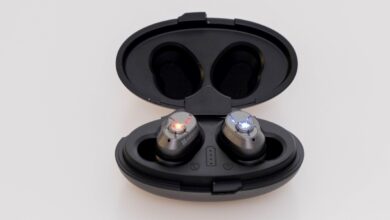Gold Planar GL2000 Review – Cutting Down the Tall Poppies

My Video Review:
Gold Planar might sound like a new company in the headphone business, but they are far from that. They are manufacturing audio drivers for several years now, they are even providing them for several established headphone and loudspeaker manufacturers as OEM drivers. That’s right folks, Gold Planar is very much into audio for quite some time now. At this moment they have several headphone models, split into three categories: (1) planar-magnetic, (2) Air Motion Transformer (AMT) and (3) Ribbon driver headphones. I wish I would be testing their exotic AMT and Ribbon models, but maybe that’s a story for another time. Today is a day for their flagship planar-magnetic headphone, the GL2000 and before your ask, these are the double-sided magnet version that are easier to drive.
There is a lot of talk about the GL2000 as of late, they piqued my curiosity quite badly. Hearing is believing they say and it was only a matter of time when a GL2000 would land on my table. I needed to hear them for myself and I’m glad I did. GL2000 is priced at $639, a very aggressive move with little to no competition at that exact price bracket. Are they worth it though? Let’s check that out and break it down step by step, in a very customary (read: comprehensive) way.

Unboxing Experience
Gold Planar (GL from now on) didn’t spare a dime on their packaging. You’ll find the same super sturdy, water-resistant and bomb-proof Pelican case Audeze is bundling with their upper echelon LCD series of headphones. The only difference is that GL used a bigger case to accommodate a bigger headphone and all its accessories. Besides the usual leather ear-pads preinstalled on GL2000, you’ll find an extra pair of hybrid perforated ear-pads. Apart from them, there’s a detachable cable placed in a velvety pouch, in this case it is terminated with a 4.4mm Pentaconn balanced jack. If you need a traditional 4-pin XLR termination, that will cost you an additional $100. You’ll find a piece of paper with all the specs and that’s everything found in its package. The Pelican case is filled with plenty of soft foam working as pillows for the GL2000, so you can be sure that it will arrive safe and sound.
The cable itself seems to be hand-made, it uses high-purity (6N) Ohno-Continuous-Cast (OCC) silver-plated conductors and there is really no point in changing it. In their stead, I would replace that 4.4mm jack with a 4-pin XLR, since GL2000 is marketed as a desktop headphone to be used mostly at home.

Build Quality & Looks
We are dealing here with a huge looking fully open-back planar-magnetic headphone that uses lots of metallic parts, leather and pleather, with very little plastics. I find them extremely pleasing to the eyes, those huge looking ear-cups are the first thing to draw attention. The yokes are made out of aerospace-grade aluminum and so are its headband holders. The headband itself is extremely soft, the softest I’ve experienced with headphones and it is comfortable long term. It looks like eco-leather to me, which should resist plenty of use and abuse. The only plastic parts are the ear-cups themselves; those are warm to the touch compared to the cold yokes, confirming my findings. The headphone seems to be electro-painted with a matte-silver paint that has a higher grain that usual. The thicker layer of paint and its higher grain is better protecting it from the outside world, a very good move.
This particular pair is the double-sided magnet version that weights a little bit more, more exactly 530 grams versus 460 on the single-sided magnet version. The weight distribution seems to be even, there is little to no pressure around my ears, so its heftier weight doesn’t bother me at all.
The ear-cups are angled forward so that they can better surround your ears and follow the shape of the face, very much like those of Hifiman Arya, their sheer size is pretty much the same with the Arya too. The ear-cups have 3.5mm female jacks on them, so you can use your own Hifiman, Quad or Kennerton cables if you please. Those headphone connectors are directed to your shoulders, but considering the slight tilt forward of the ear-cups, it shouldn’t pose a problem for anyone even if custom cables with longer 3.5mm jacks are being used
The headband adjusting mechanism seems sturdier than usual and I need to apply a bigger force to move that headband up and down and that is always a good sign. I’ve moved it tens of times and that didn’t scratch its surface at all, another good sign of a nice craftsmanship. The only thing I dislike about this headband is that I’m using its second height position out of ten clicks and I have quite a big melon. This is certainly the widest headband I’ve seen so far and smaller heads might have fit issues even at its shortest position.
I’ll go as far and say that, I find its build quality better than that of Hifiman Arya, which I’ll compare to in the latest chapters of this review. I find them sleek and elegant looking, not too flashy, with just the right amount of bling.

Comfort Level
The ear-pads are deep, soft and are padded with plenty of memory foam. I find them gentle on the cheeks and soft enough to be used in long listening sessions. The hybrid perforated pads are even nicer, those are always breathing so forget about sweaty ears in the summer time. The Hybrid pads resemble quite a lot the stock ear-pads of Hifiman Arya and the stock leather pads resemble those of Audeze with an elongated shape. They fit around your head snugly and provide enough padding, putting just a small pressure around your ears. The pressure points are on top of your head and around your ears, anything else will not be touching you. With their stock pads, there was a higher side pressure, but once I’ve adjusted them to my head size, everything went back to normal. I find them more comfortable than a pair of Sennheiser HD6XX, OLLO S4X, Erzetich Phobos, comfier than any Audeze planars, but less so compared to Hifiman Arya and Susvara.
The ear cups are huge, with an inner diameter of 86mm and an outer one of 122 mm, these will keep even elven ears inside their cups. GL2000 uses a huge 100 mm tall, 36 mm wide planar-magnetic driver that will be playing music for you. These are marketed as over-ear open-back headphones and they indeed wrap my ears nicely. These are heavier than half of the headphones I have around, but in all seriousness, they feel lightweight and quite comfortable, especially after listening to a 730-gram Audeze LCD-4 and Erzetich Phobos for a few hours.

Tech Inside them
We are talking about an open-back headphone that houses a huge planar-magnetic driver inside. I was provided with a double-sided magnet version that considerably improved its sensitivity from 95 dB (single-sided magnet) to 99 dB per 1 mW of power. They should work pretty well with portable devices, but will surely sound the best out of a dedicated desktop headphone amplifier. I can vouch for its sensitivity, GL2000 is one of the easiest to drive planar headphone I have around. Its lower impedance of 60 Ohms also played a role in here. There are many planar-magnetic headphone manufacturers that are using double-sided magnets, Audeze for example is using them starting with LCD-2 and upwards, in a push-pull configuration and it’s the same configuration found on GL2000. The price difference between the single-sided and double-sided magnet is not that huge, but the increase in sensitivity is substantial and I expect a much better drive and dynamics with the double-sided version. I strongly suggest getting the double-sided version, which is easier on your amp and better in terms of sonics. I will be measuring them in the latest chapters of this review and I’m quite curious about their technicalities, make sure to read until the end for a full measurement analysis.
It’s an open-back headphone, leaking a great deal of noise outside its cups, so it should be used mostly at your listening battle-station. Okay everyone, let’s hit some eardrums!

Sound Performance
I. Preliminary Sound Impressions
I’ve been chasing for bigger and bigger drivers in my loudspeakers for my entire life now, when I had 5” woofers on my Dynaudio’s, I was dreaming for 7” woofers, when I had them at 7”, I wanted them at 8”, then I moved to stand-floor speakers so I can have multiple drivers to better fill my room with sounds, to improve the low-end delivery and the chest-pounding impact. Pretty much the same can be said about headphones, you want their drivers and their magnets as wide and as tall as possible. So far, in planar-magnetic ranks, 100 mm drivers are the biggest and meanest and a same pair of drivers are sitting in the GL2000.
What was very clear from the start even without any kind of burn-in is that GL2000 hits you with a huge and dense wall of sound. It’s very reminiscent of that of the Arya. This not the widest sound I’ve experienced with headphones, but still, GL2000 are very open-wide sounding, easily in the top 4 in my ranks in terms of soundstage. As far as planar-magnetics go, I find them some of the airiest and deepest sounding. I was also quite surprised by their linear tonality, with just a pinch of naturalness. GL planted an excellent tonality in them, its bass rendition stood out immediately with leather pads and treble always seemed extended even past top-octave, while being detailed, outlined, but never offensive. Oh, about that, their detail retrieval should be banned and illegal at this price point, the amount of transparency and micro-details coming out of them is just spectacular, almost on the same level with the overly-popular Hifiman Arya.
Since GL2000 is portraying a huge wall of sound, it is so easy following the trail of a musical instrument or maybe of a voice, there is plenty of air around them all, so don’t even think about muddiness or about a crowed and up-front performance. The amp pairing is quite important with them, I just tried 6 headphone amplifiers and I like them the most out of transistor-based amplifiers, especially those biased into class-A like Flux Labs Acoustics FA-10 and Burson Soloist 3X, another standout was the tiny xDuoo TA-10R which infused more soul and midrange presence into them. THX-based and NFCA amplifiers were a little brittle and hard on their trebles and this is why leather pads were used the most with such amplifiers. Their treble is not exactly hot or bright, but it is definitely powerful in that region, there is plenty of zing and bite, the smallest details are always asking for some prime-time from the listener. So far, I don’t have a lot of complaints about these, I’m yet to measure them, but in all fairness, I don’t see anything wrong with them.
I can complain about their sound with perforated hybrid ear-pads that are scaring away the sub-bass, leaving more treble information in the earcups, making them brighter and thinner sounding. However, putting those leather ear-pads back, everything returns to normal, the signature planar-bass is back in full force, hitting like a hammer with the right amplifier and unearthing an illegal amount of detail from your tunes.

II. Power Requirements & Amp Pairings
There is something special I want to mention about the GL2000 and that is their incredibly high sensitivity by planar-mafia standards. At 99 dB per 1 mW of power (for the double-sided magnet version) these are one of the easiest to driver planar headphones I’ve stumbled upon. Their thin membrane, powerful double-sided magnets and of course its lower impedance of 60 Ohms all played a role in achieving such a high sensitivity.
So far, the most sensitive planars I’ve tried were Quad ERA-1 (94 dB/1mW), Erzetich Phobos (~95 dB/1mW) and Kennerton Wodan (105 dB/1mW) that worked well even with portable devices of all sorts. I needed to test GL claims for myself and indeed GL2000 is one of the easiest to drive planar headphone I’ve tried. When switching from another planar to GL2000, I always need to double-check my volume level, because I can easily damage my hearing if I’m not careful. These are becoming loud and fast even with portable DAPs and DAC/Amps.
According to the Benchmark HPA4 and to the microphones inside the MiniDSP E.A.R.S., these are by 8 dB more efficient to the Hifiman Arya, by 9 dB more efficient to the Audeze LCD-4, by 29 dB more efficient than the Hifiman Susvara and in return Kennerton Wodan is by 1dB more efficient to the GL2000. This is actually quite a big deal, since you don’t need the biggest, the meanest and the most expensive amplifier to drive these to deafening levels. While I don’t recommend smaller Bluetooth dongles with planars, something nicer like a FiiO Q3, xDuoo XP2 Pro, XD05, iFi Micro line, Shanling M6 and FiiO M11 PRO should work perfectly fine with headphones like these. I was quite impressed that my smartphone and laptop could drive them pretty loudly, but of course a dedicated audio device would sound much better and I’m not only about the loudness. GL2000 together with Wodan are two of the easiest to drive planars, that are not requiring heavy desktop power to be moved. Even simpler solutions like Loxjie D30, Topping DX7 Pro, Matrix Mini-i 3 Pro should have plenty of volume and headroom to drive them at their best. I personally enjoyed them the most out of class-A amplifiers, those sounded the best to me, followed by a hybrid and then by several NFCA and THX-AAA based amplifiers, that were making their less joyful in long listening sessions.
Unsurprisingly, FiiO M15 and Shanling M8 with their balanced outputs sounded uplifting and snappy, highest-gain position wasn’t even needed. Their added warmth and smoothness really paid-off big time, I actually used them the most out of these two devices.

III. Transient Response
Huge drivers + a push/pull magnet configuration + a high sensitivity can only equal an amazing transient response, not only speed, but also slam should be glorious. I’ll tell you right away, that for the best results, especially in the slam department, I should stay away from those hybrid ear-pads and use only its leather ear-pads, that are seriously improving its sub-bass delivery and subsequently its sheer slam and ear-drum impact. I’ve heard better bass renditions, deeper and more visceral, but sadly at a much higher price (Audeze LCD-4 and Hifiman Susvara), with that said, GL2000 aren’t that far behind, I still can hear those 20 Hz notes loud and clear and those still pound like a drunk berserker entering its furious state. With the right amp, GL2000 shown a close to perfect transient response, they were nimble, fast and punched with an incredible force. Their high sensitivity, makes them fast and punchy not only with stationary desktop setups, but also with mid-range portable devices. These worked equally well with faster paced and with slower paced music, but I feel that they truly shined with rhythmic tunes that are full with sub and mid-bass notes. Transient response and soundstage were really the biggest standouts of this headphone and there is no point in going through a series of tracks just to arrive at the same conclusion that GL2000 are visceral, punchy and engaging with the right amp and music.
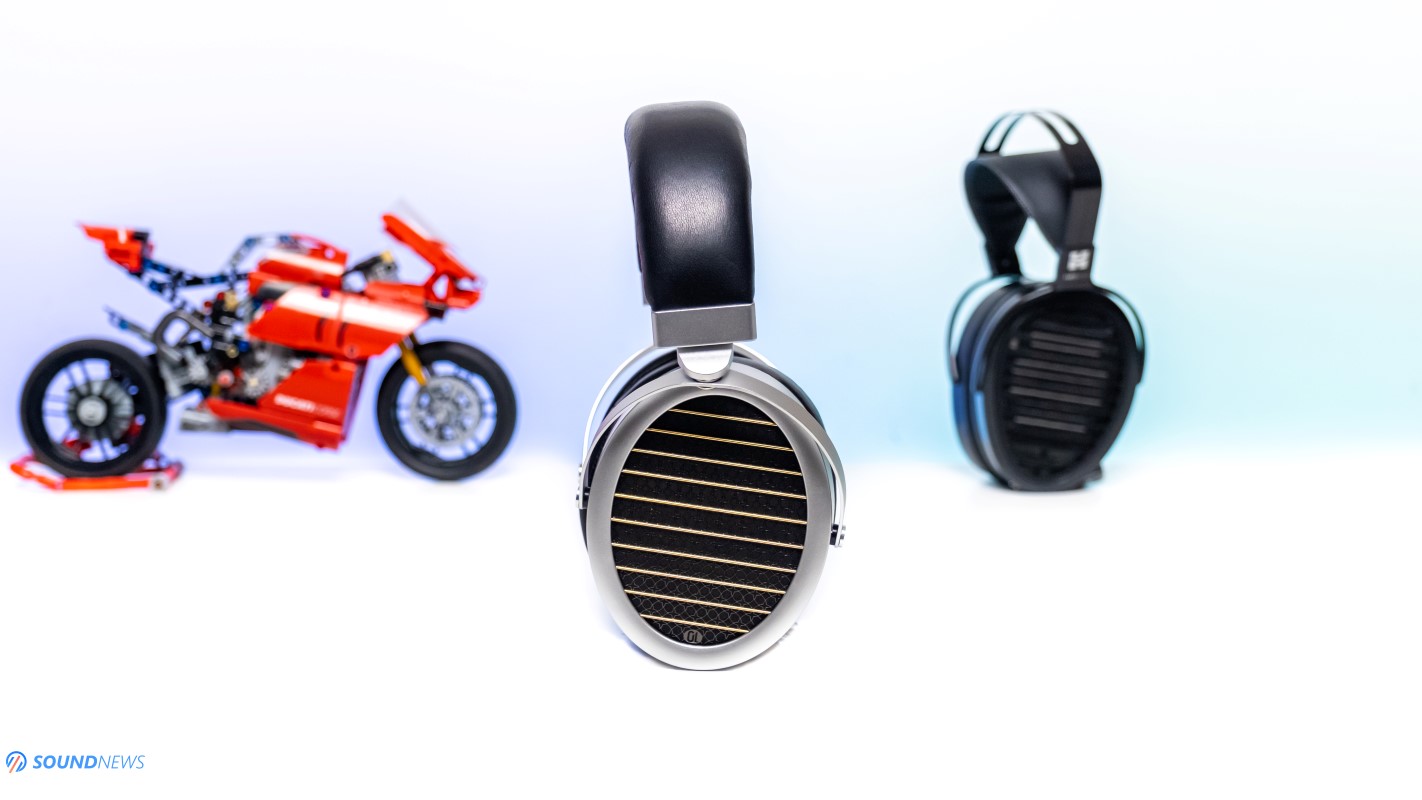
IV. Soundstage & Depth
An open-back planar with huge drivers and with deeper ear-pads can only mean one thing: a huge wall of sound that is thrown farther away from the listener, improving the pin point imaging and depth. With them, the sounds are pushed past my shoulder level, putting everything around me in a very natural way. GL2000 is almost on the same level with a Hifiman Arya when it comes to scale and air around the notes. My favorite headphones are all open-back and from them all, GL2000 is easily siting in top 4 in terms of soundstage size and overall scale. With them, I can easily focus my attention on the things I want to hear and discard the sounds that aren’t so important to me. The empty spaces between musical always felt bigger and crowded passages weren’t troublesome anymore, even with less than perfect recordings.
If you enjoy a larger than usual soundstage size, then GL2000 can easily provide that to you and if you want to further increase it, a tube-based amplifier (it can even be a hybrid) will give you a helping hand. A simple ear-pad swap to the hybrid perforated pads, makes the sound even bigger, almost ethereal at times, at the cost of being less weighty and natural sounding.
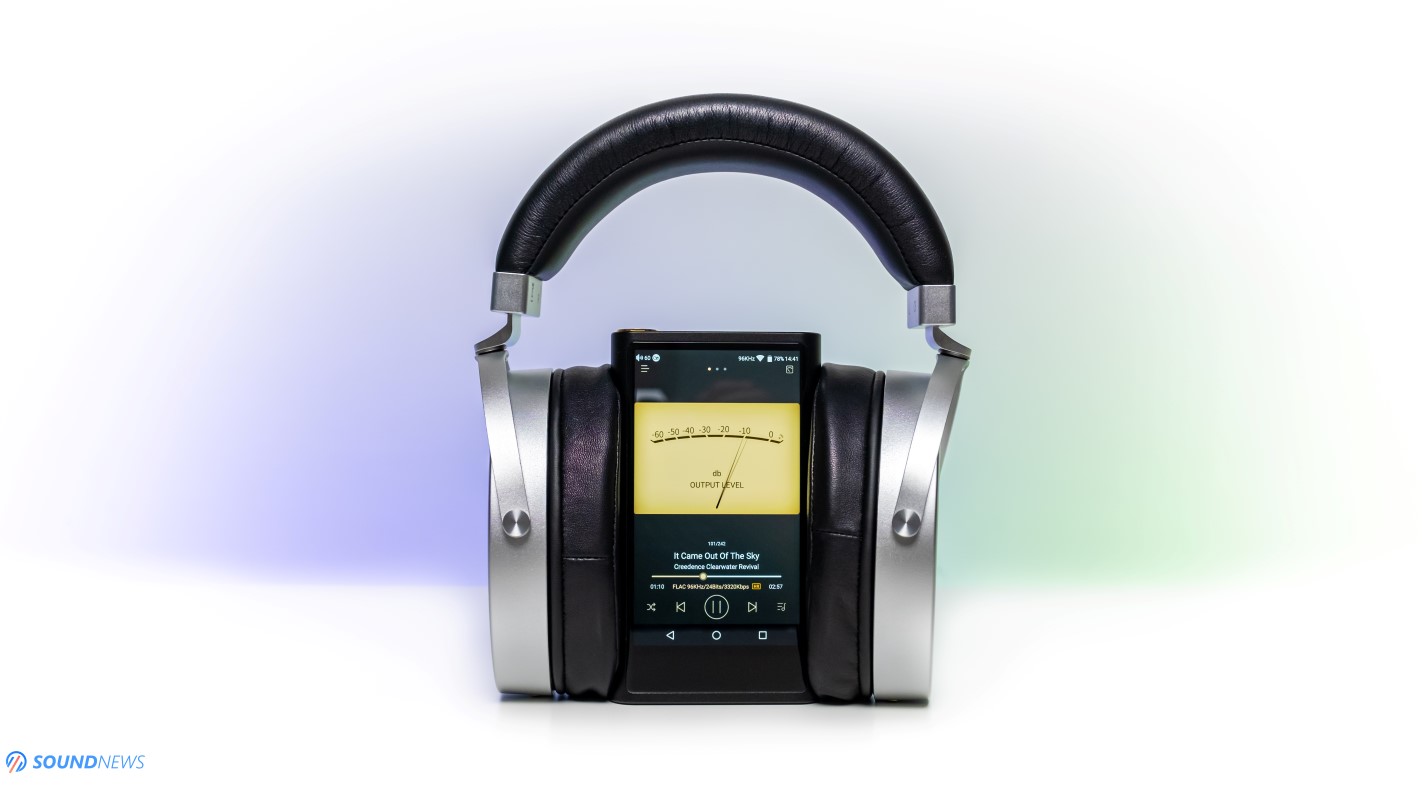
V. Detail Retrieval & Transparency
Gold Planar are polishing their drivers for quite some time now and GL2000 seems to have the latest generation and the most advanced planar driver they created so far. I find them transparent and clean sounding; I can look deeper into my tracks without straining my hearing that much. They are showing a higher degree of micro-details even compared to some pricier headphones. For example, Audeze LCD-2 can’t stand a chance versus them, Quad ERA-1 are also not that precise and clean sounding. There isn’t that big of a difference as far as micro-details go even compared to Hifiman Arya ($1600) or to Kennerton Wodan ($2200). GL2000 is a clean sounding unit and I’m sure that its nice treble delivery adds a welcomed layer of information, making them work as a magnifying glass for your tunes. There is a little bit of sharpness with the perforated pads, making them appear even more detailed, but I’d stay away from them and use their leather pads as much as possible, for the added weight in the bass and presence in the midrange.
With audiophile-proof music from the likes of StockFisch Records, Deutsche Grammophon, Chesky Records, Linn Records, Wilson Audio and others, GL2000 was able to point my attention towards tiny details like small chat in the auditorium, feet movements, key hits, pedal presses, air traveling freely around and trombone players inhaling air before their turn. All that came natural to me, I didn’t need to close my eyes and stress myself too much. Sure, there are several headphones that are more detailed than these, but at $639 I don’t know another headphone that can do the same.

VI. Frequency Response
I have used mostly their leather ear-pads, so I’ll be describing their FR only with those. GL2000 has a close to perfect sub-bass delivery. Just a few dBs are missing somewhere between 20 and 30 Hz, so I can’t call them perfect in there. There is plenty of driver movement in the lowest octaves, Limit to Your Love by James Blake still send shivers through my spine and Guitarmass by Infected Mushroom is still groovy and head-bangy, working as a neck massage for me. There is texture in here, it is layered and clean sounding. It has a right amount of weight to it, it can move plenty of air, so that slam and punch wouldn’t be affected in a bad way. Mid-bass is strong, I find it linear and straight as a line, it is controlled and decays at the right time.
Midrange starts strong, its dense and heavy sounding. Male voices are rendered perfectly, I’ve heard them guttural and natural sounding. I find its midrange a bit fuller compared to Hifiman headphones, but less so compared to Audeze and Kennerton headphones, it is somewhere in the middle, neither wet, neither thin sounding. There is definitely some warmth in here, I don’t hear deviations from the linearity curve. Upper-midrange starts its descent at around 2 kHz making female voices less sibilant and less present in my tunes. GL went with a safe tuning adding just a right amount of warmth in the midrange, without putting an accent on sibilant overtones.
Treble is not that far from linearity and I find it almost perfect. The most sensitive part of our hearing (~4 kHz to 7 kHz) is calmer and rolled-off by a few dB, putting a higher accent on upper treble and top-octave. I find it clean, extended and detailed sounding, without brightness in the most crucial parts. Perforated ear-pads are rising the whole treble region by about 4 dB, increasing the treble presence quite a lot, making them appear as brighter and harder to swallow in long listening sessions. With either ear-pads, I don’t find the ear-bleeding or harsh sounding. Yes, there is more treble presence, but it is under control and I don’t find it elevated at all.

VII. Measurements
After offering my full-blown subjective opinions, it is time to put them under a magnifying glass and see how they really perform. When it comes to measurements, my best friend is still the Benchmark HPA4 as it is as linear as headphone amplifiers could ever be and I resumed at using the Matrix Audio Element X as the main DAC for the job. The measurement rig was the MiniDSP E.A.R.S. calibrated with HPN (Original Headphone Compensation) files. Do note that MiniDSP E.A.R.S. is not following any IEC standards, meaning that my readings can’t be used as reference measurements or anything like that, I’m doing them only to get a general idea about their sound signature.
I re-measured them around 10 times after finding the perfect spot on the test jig, no side-pressure was applied on the ear-cups as they stayed in their natural position.
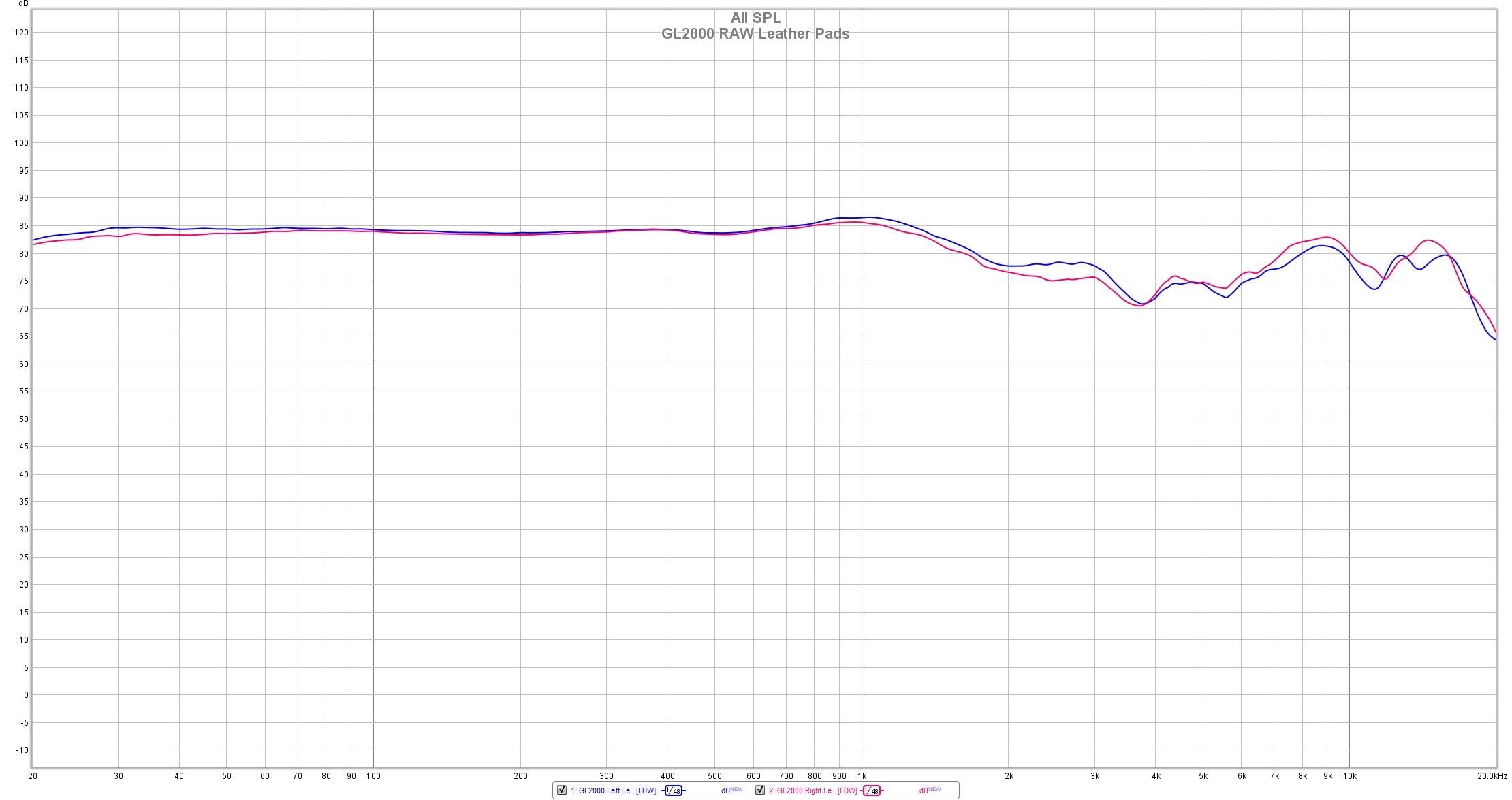
This is their RAW measurement with the stock leather ear-pads without any smoothing applied. There is a bit of driver mismatch in the treble region, but it isn’t that obvious in the bass and midrange regions. I’ve seen much worse driver deviation on costlier headphones, so this is still normal behavior in my opinion.

Take a look at their RAW measurement with the perforated hybrid ear-pad, as you can see the sub-bass is dropping by about 4 dB and mid and upper-treble is rising by about 4 dB.
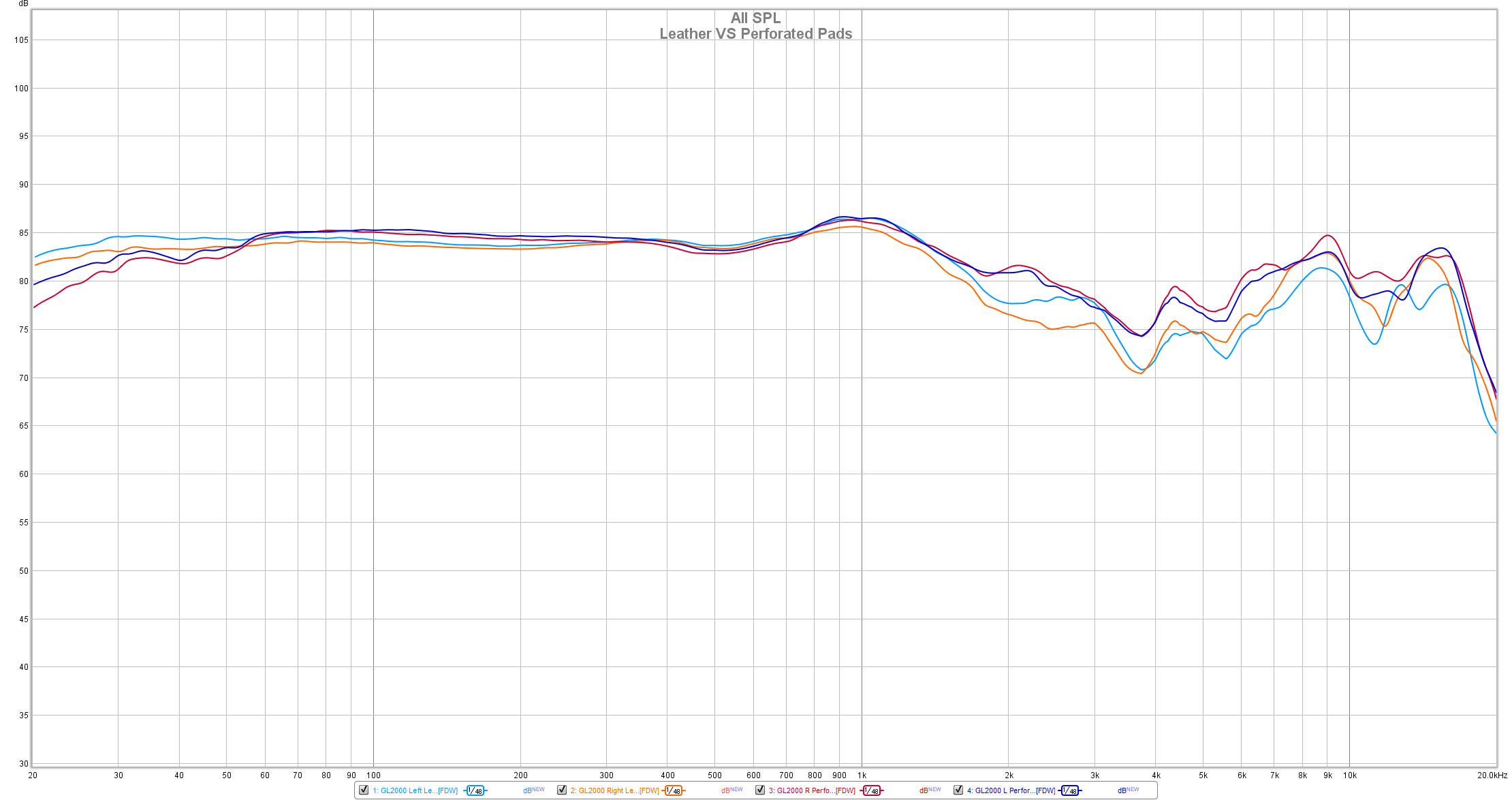
Here are both readings overlapped and zoomed, so you can understand what’s the difference between leather and perforated ear-pads. (Dark Blue and Cherry Red – Perforated pads, Orange and Light-Blue – Leather pads).

All my next readings would be done only with the leather ear-pads. Applying a 1/12 smoothing, I am getting this graph and as you can see, the sub-bass is very good, mid-bass is absolutely perfect, midrange is mostly linear but it sees a gentle slope. Treble is quite relaxed in the most sensitive part of our hearing (between 4 and 6 kHz) and immediately after that it gets higher momentum and becomes stronger and a little more defined. There is a plenty of presence in the top octave that gives an impression of a detailed and transparent sound. As you can see, GL2000 has a close to perfect frequency response, as of right now the only thing bothering me is the slight driver mismatch.

An overall THD (Total Harmonic Distortion) of 0.12% is a very good result, one of the best I’ve measured so far, distortion in the sub-bass is a bit higher and everything else stays somewhere between 0.2 and 0.5% which is really good performance.

Decay of the notes is lightning fast, you can see a speedy recovery of the driver (Blue mass) especially in the treble region. In this regard, GL2000 is faster than the Kennerton Wodan and Erzetich Phobos and pretty much at the same level with Hifiman Arya. Impressive.

Waterfall is looking good too, you can better see the hot spots in the frequency response and the longer decays in the bass.
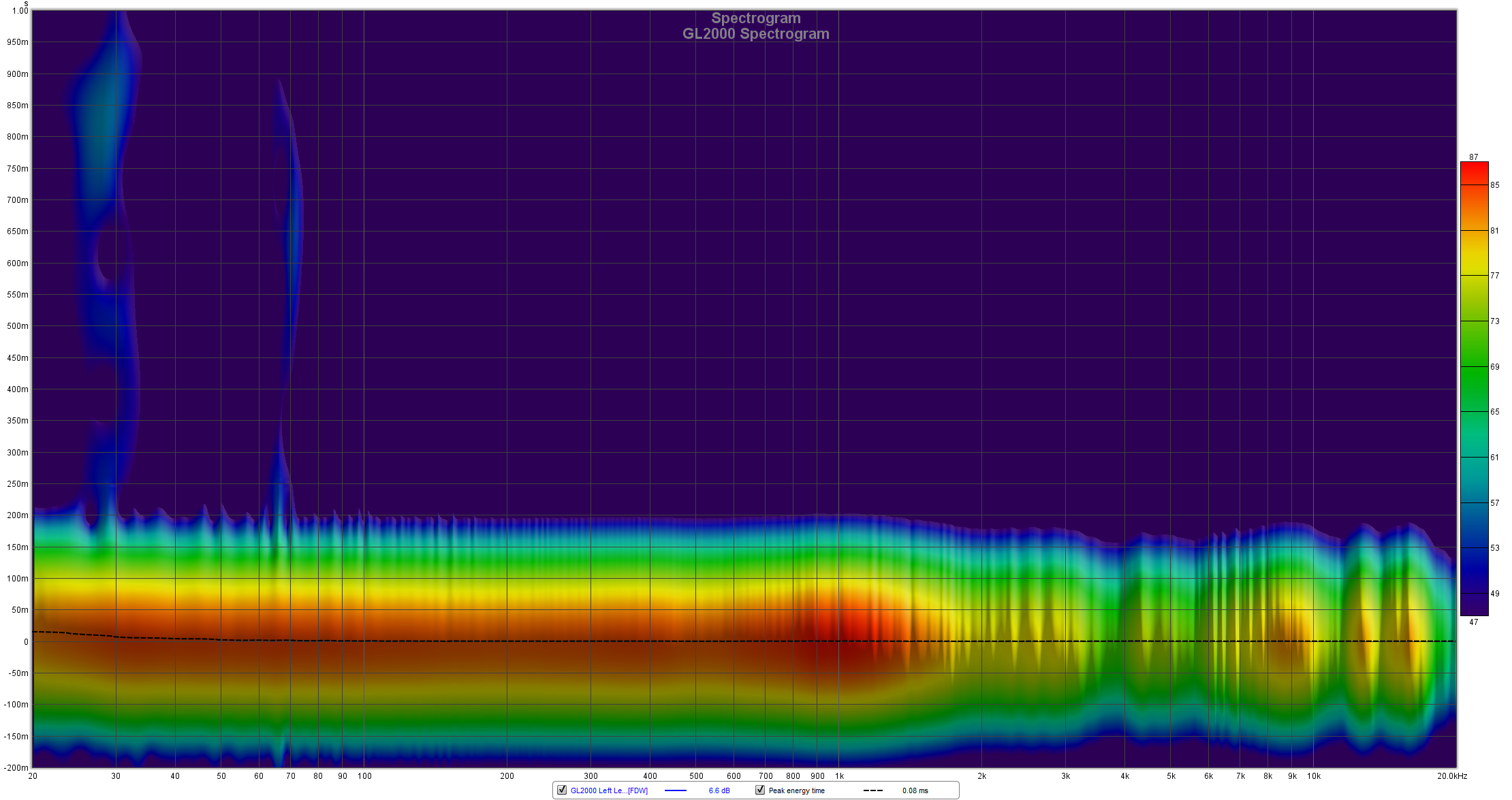
Spectrogram shows a minor ringing of the driver in the sub-bass, but it is nothing to be worried about. Most open-back headphones are struggling in maintaining a perfect sub-bass delivery.
Overall, I’ve recorded a close to perfect FR, a very low THD, a super-fast decays, a smooth waterfall and a small driver mismatch.
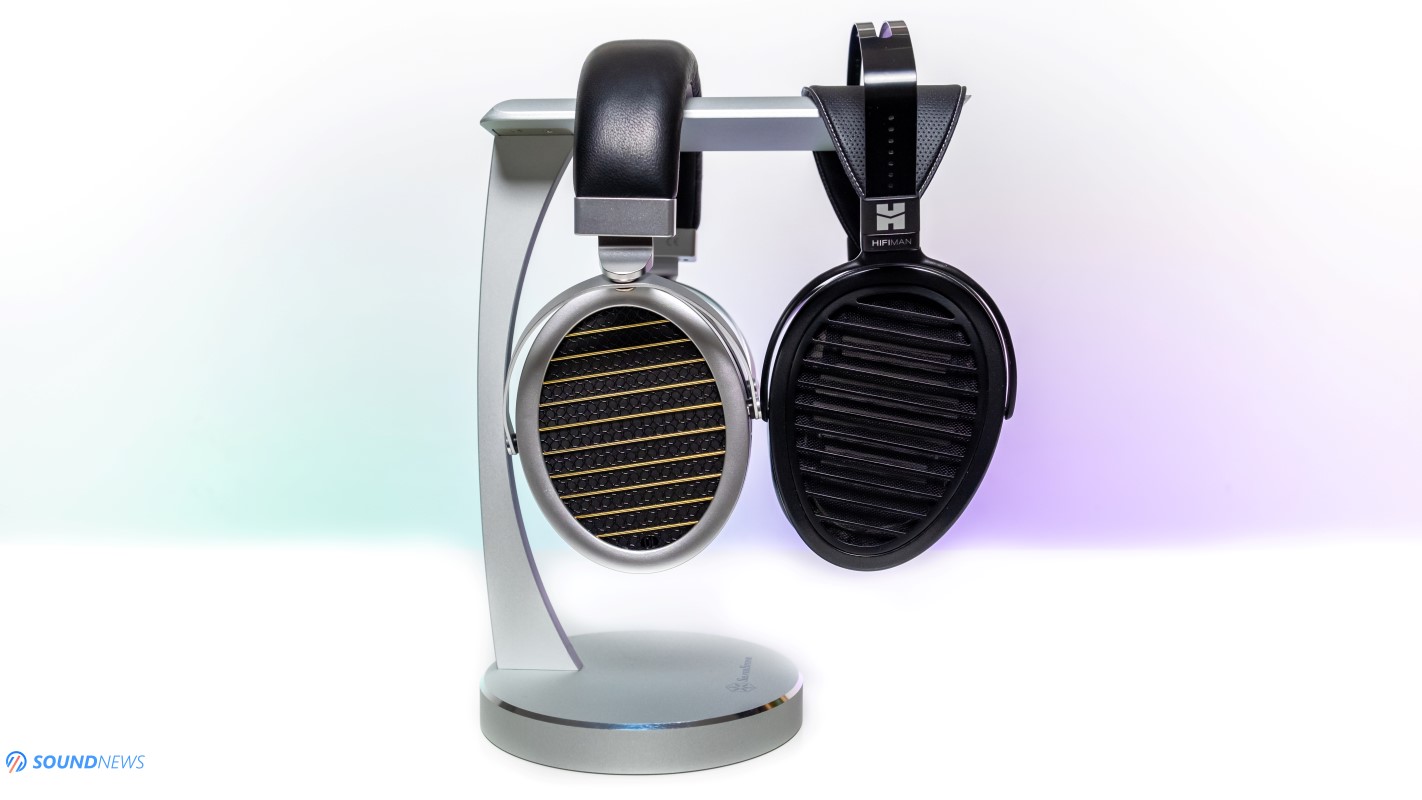
VIII. Comparisons
Gold Planar GL2000 Double-Sided Magnet ($639) VS Hifiman Arya ($1599)
It is unusual comparing two headphones coming from very different price brackets, but I find their technicalities pretty close and their tonalities as well.
I volume matched them using the MiniDSP EARS and Benchmark HPA4, I’ve used the same setup and the same headphone cable, only the headphones were being swapped. Let me start by saying that GL2000 are better when it comes to bass slam and authority. It isn’t even a contest, GL2000 slams considerably harder, its bass delivery is visceral and raw, sometimes it’s almost too much. GL2000 are one of the punchiest sounding headphones and Arya are just less impressive in here. Electronica and rock music was a pure delight with GL2000 and it was less impressive on the Arya. Transient response is immaculate on GL2000 and Arya seems to be pressing the brakes a little, especially in the bass.
Midrange performance is meatier on the GL2000, there is more meat to the bone, voices are fuller and more natural sounding. Guitar strings sounded sweeter, piano notes had more weight to them. Arya wasn’t bad in here, but it wasn’t that impressive, never soul-grabbing and meaty sounding. Sincerely, the midrange rendition was never the strongest point of all Hifiman headphones, it isn’t that hard outperforming them in here.
Treble performance was better on the Arya, it had more details, more pitch, more presence, more details, sometimes it became bright sounding, especially on THX-AAA and NFCA amplifiers. GL2000 on the other hand was calmer in here, it had a slight roll-off, that worked as a cure for treble intensive music. I guess it depends on the listener, someone might like more treble presence and Arya is that headphone, someone might like a more relaxed and smoother treble rendition and GL2000 seems to be that headphone.
When I moved to live recordings, Arya could portray a larger soundscape, the sounds were a bit farther away from me, it sounded bigger and more impressive with orchestral work, with classical, with live music and so on. Arya was better decompressing my music, I simply felt more air around every note. GL2000 wasn’t that far away, but clearly it wasn’t as airy and ethereal sounding. Depth was also better on the Arya, I was better feeling the distance between all the musicians and myself. While GL2000 was no slouch in here, it wasn’t exactly as deep and as 3D sounding.
Arya also picked up an additional layer of information, it was by a little more detailed and transparent sounding to me. It was brutally honest sounding at times and I didn’t feel exactly the same with the GL2000 on my head. Both are clean, detailed and transparent, it is just Arya is better doing this.
I tried them out of several headphone amplifiers and I do feel that GL2000 worked better with them all. Arya on the other hand, demanded only powerful Class-A amplifiers that could deliver more current to satisfy their needs. Arya was dead-flat, almost too analytical and less engaging out of THX and NFCA amplifiers, while GL2000 retained the same speed, impact and engaging nature no matter the amp. GL2000 was easier to match with DACs and amplifiers and Arya was a little more difficult to tame. Arya worked with warmer and smoothing sounding DACs and amps, while GL2000 didn’t have that acute problem.
Overall, Arya felt like a more technical sounding headphone, showing a higher degree of detail, while also sounding wider and taller on all axes. It had more information up top that made them sometimes harsh and bright sounding. GL2000 wasn’t that far away, it was still clean and airy, at a lesser degree of course, but they won when it comes to tonality, bass delivery, impact and slam, their midrange was also fuller and more natural sounding. GL2000 worked better with a wider variety of music, with all DACs and amplifiers I have at my disposal, while still costing by about ~$1000 less. GL2000 were impressive sounding in a high-end headphone setup and I would never guess their price if someone would ask me.

Conclusion
This is my first contact with Gold Planar headphones and hopefully it wouldn’t be my last. Those AMT and ribbon headphones are hot as chillis and who knows…maybe I’ll give them a try in the future. I really don’t want to hype things that don’t deserve it, but I strongly believe GL2000 is worth its asking price in full. I specifically didn’t want to compare them with a lot of headphones, because I’ll be cutting down too many tall poppies.
There are only several planar headphones that can be considered as must-own at their respective price points and I’m easily adding the GL2000 to that list. If you love your bass impactful and hard slamming, your midrange dense and full-bodied, your treble clean and detailed without being unoffensive, then GL2000 is a very easy recommendation to make.

Gold Award is fully deserved, I really like how headphone market starts to shift and wish more companies would release great sounding headphones at affordable prices. Congratulation to the team and I’m looking forward to their next doings!
Gold Planar GL2000 was kindly provided by Linsoul, and it can be purchased from their web-store right here. In case you get ’em, leave a comment below, I’m curious to know how they are treating you.
PROS:
- Great packaging, decent cable quality
- Solid construction, good materials
- Great comfort level
- Rich and full bodied sounding (w/leather pads)
- The nicest slam and ear-drum impact at less than $1K
- Transparent and detailed sounding
- Strong bass and midrange performance
- Extended yet inoffensive treble
- Very easy to drive
- Reference sound at less than $1K
- Great value!
CONS:
- Perforated ear-pads are hurting its tonal balance
- A user-manual / spec sheet in English wouldn’t hurt
- 4-pin XLR cable termination should be by default
ASSOCIATED EQUIPMENT:
- DACs: Audiobyte HydraVox + HydraZap, Matrix Audio Element X, Flux Lab Acoustics FCN-10, QLS QA390, Gustard X16, Topping D70S
- DAPs: Shanling M8, FiiO M15
- Headphone Amps: Benchmark HPA4, SparkoS Labs Aries, Flux Lab Acoustics FCN-10, Gustard H16, SMSL SP400, Burson Soloist 3X
- Power Amps: KECES S300
- IEMs: FiiO FA9, FH7, FD5, Meze Rai Penta, Rai Solo, LittleDot Cu KIS & many others
- Portable headphones: Sennheiser Momentum 2, Meze 99 Classics
- Full-sized headphones: Gold Planar GL2000, Hifiman Susvara, Hifiman Arya, Audeze LCD-4, Erzetich Phobos, Erzetich Mania, Quad ERA-1, Ollo S4X Reference, Kennerton Wodan, Magni, Gjallarhorn, Vali, M12S, HarmonicDyne Zeus
- Loudspeakers: KEF Reference 3
- Interconnects: QED Reference (x2), Topping TCX1 (x2)
- Speaker cables: Kimber PR8, Audioquest Type4
- Power Cables: Isotek EVO3 Premier (x3)
- Balanced Isolation Power Conditioners: PLiXiR Elite BAC400




